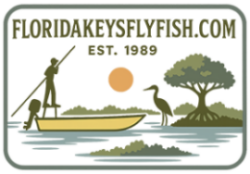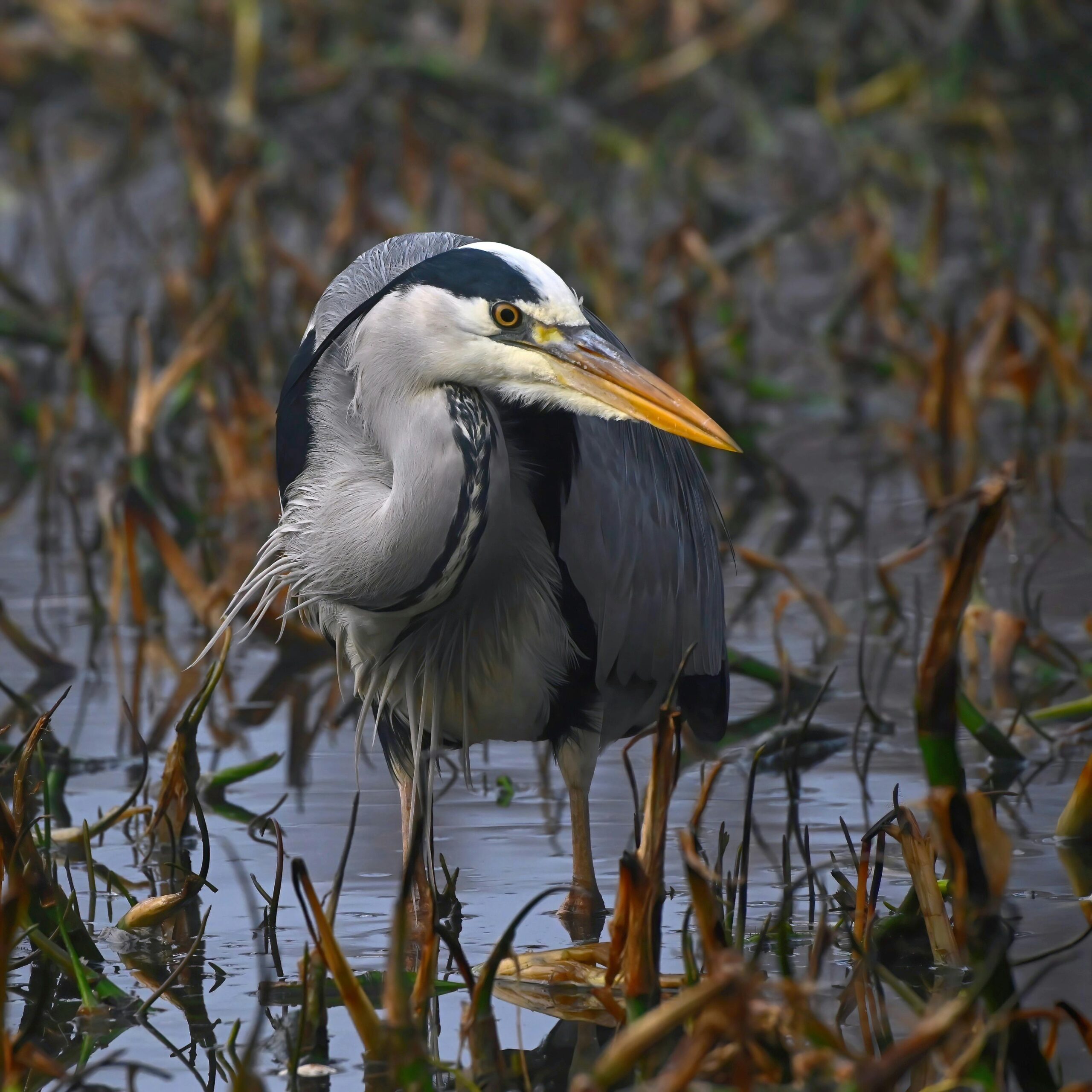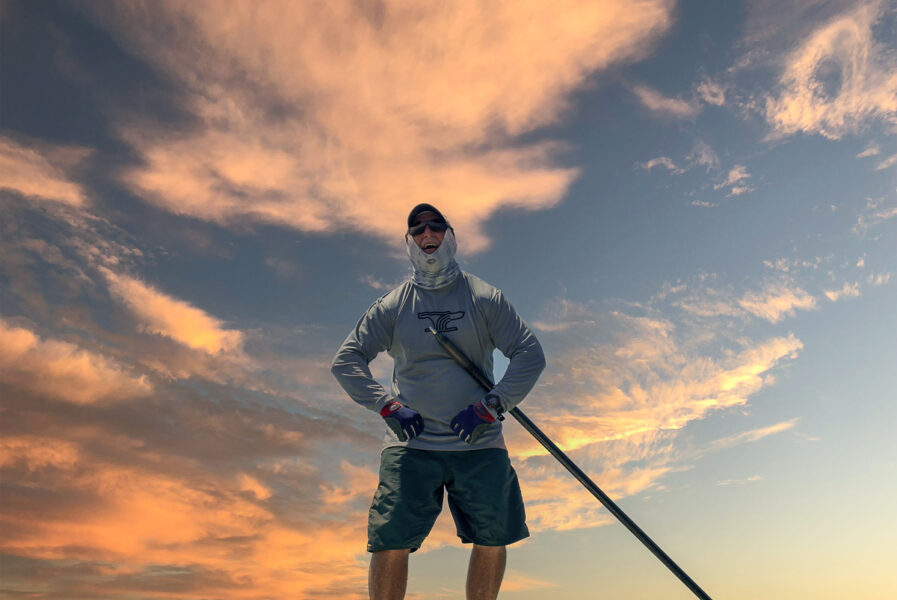The eighty-five-mile pre-dawn drive from my home in Islamorada to the Flamingo boat ramp is a ritual as much as a commute, filled with the anticipation of a great day on the water. The sky at 5 AM is dark as I hitch up my Hells Bay Whipray, her slender yellow lines glinting faintly under the glow of the lights in my carport. My longtime client and good friend, a mix of tired from a late flight, and eager, settles into the passenger seat of my Jeep as the engine comes to life.
After a quick stop for fuel, ice, and coffee at the nearby Marlin convenience store, we head north on US1, leaving Plantation Key and Key Largo behind. The headlights carve through the pre-dawn mist and shadows, and the faint outlines of mangroves and water come into view while approaching Lake Surprise and Jewfish Creek Bridge. Windows open, and the world is beginning to stir with the steady stream of southbound vehicles in the opposite lane belonging to folks commuting from Dade County to the Keys. Mingling with the aroma of fresh hot coffee wedged in the cupholders the April air is surprisingly cool, carrying the familiar scent of salt and swamp – better known as low tide.
Anticipation deepens as we pass ‘Roberts is Here’ produce stand, Dade Correctional Institution, and then turn onto the stretch of road with adjoining farmland called SR-997 that leads into Everglades National Park. We pass through the slash pines and palmettos of the Pinelands, Rock Reef Pass, and the Dwarf Cypress Forrest, with the skiff obediently tracking behind us on the newly paved road. The wetlands open up, as the stars above begin to fade with the first hints of orange and pink, painting the horizon. The silhouettes of great blue herons and egrets emerge in the twilight, wading in the shallow grassy water known as Pahayokee.
Conversations with my friend ebb and flow, sprinkled with fishing stories, family, work, today’s game plan, sandwiches, and the occasional silence as we take in the surroundings. We share tidbits about the wildlife, visible even now. A hawk perched on a paurotis palm. Buzzards eating roadkill, wood storks roosting in dwarf cypress trees, the glint of an alligator’s eyes reflecting from a roadside pond. The rising sun lights the Whitewater Bay boat ramp parking area when we finally reach Flamingo. The air is alive with the buzzing of mosquitoes, the distant sound of an outboard, and the squawk of a heron. We feel the unmistakable energy that comes with the day’s promise: the thrill of stalking our targets, the graceful arc of a cast cutting the air, and the heart-pounding moment of connection as a fish accepts our offering.
As I back the skiff down the ramp, we see several small tarpon rolling near the dock. We both agree they’d be way too easy to catch, without exchanging a word. My friend’s anticipation is evident as he steps aboard. Everything feels perfectly aligned, the Glades, the skiff, the gear, the sandwiches, the coffee, and the weather. It’s the kind of morning that reminds me of why I do this: not just to fish, but to be part of something timeless.
The sun was just coming up on the horizon as I steered my skiff through Buttonwood Canal, Coot Bay, Tarpon Creek, and Whitewater Bay. The Everglades here is a sprawling tapestry of water, and mangrove islands, stretched out like a masterpiece painted by nature herself. Each morning here feels like a revelation, a chance to immerse myself in the rhythm of a land that hasn’t changed much in millennia. For over thirty years, I’ve guided anglers through this labyrinth of life. It’s more than a job, it’s a calling, a privilege to share these waters with long-time clients who’ve become great friends, and who appreciate how special this ecosystem is.
As we weave our way to the east, deeper into the ‘Glades, through places with names like the Gates Of Hell, Nomans River, and Hells Bay, we stopped near a quiet creek mouth where the color of the water shifted from darker, tannin-stained to nearly crystal-clear ponds and streams. After poling the skiff for over an hour, and not seeing much in the way of targets, “See that shape in that pothole?” I asked, pointing to a barely perceptible shadow in the water. “Nice snook, you know they love hanging out in the deeper potholes in this bay, cast to the opposite edge, and swim it across nice and easy.” The paddle-tail swim bait landed perfectly, and before it could sink, the water erupted. With no hesitation the snook hit hard, its yellow and black body flashing in the morning light as it flushed toward the nearby mangrove roots. My friend’s line tightened as he struggled to coax the fish away from the cover. “Keep the pressure on, cup your drag, and don’t break ’em off, whatever you do!” I coached, both of us knowing full well that snook are masters of escape.
Snook are the gladiators of the Glades; aggressive, strong, and cunning. I’ve seen them bulldoze through mangroves, jump like tarpon, and break even the heaviest braided line and fluorocarbon leaders. But this time, skill and a little luck were on our side. The snook tired, and my friend brought it to the boat, where we cradled her gently in the water. “Awesome,” I said, admiring her girth, and the distinctively much darker appearance than the snook found in Florida Bay. “Let’s get her back after a quick photo.” After a few moments of revival, the snook powered away, disappearing into the shadows as if it had never been there. The thrill of catching a snook never fades, not for me, not for my clients. They’re the epitome of everything that makes the Everglades a blend of power, grace, and adaptability. Snook thrive in this labyrinth of sweetwater, their survival intertwined with the health of the mangroves, buttonwoods, bladderwort, hydrilla, eelgrass, and periphyton.
As we moved deeper into the creeks and lakes, we heard an indescribable sound that seemed directed at us, as the Everglades revealed one of its rarest residents, the American crocodile. Unlike their gator cousins, crocs are a more elusive ancient presence, with pale gray-green scales and a tapered, toothy snout. We finally spotted her sliding off a muddy bank, its stillness broken only by the occasional flick of its tail. “Get a good look,” I told my friend. “we may not see her here again. The croc turned its head slightly as if acknowledging us before slipping into the water and disappearing like a ghost. Seeing one always feels like a privilege, a glimpse into an ancient world that has managed to persist in the Glades.
The day wore on, and the Everglades offered more of its wonders. We poled through a familiar maze of mangrove tunnels, their arched branches forming a cathedral of green. The light filtered through the leaves in dappled patterns, revealing countless undisturbed spider webs where the only sounds were the soft lapping of water on the bow of the skiff, a jet high above, and the occasional splash of an unknown fish, reptile, or bird. “This is their domain, and we’re just guests,” I said, just to break the silence. “Snook, crocs, and gators, snakes, they’re all rulers of this place, each is a symbol of survival, just like the Glades itself.”
By mid-afternoon, my friend had caught and released several more snook, redfish, and largemouth bass, each one, another page added to our years of fishing memories. We started making our way back to the dock as the Glades seemed to exhale, settling into late afternoon. While not nearly as exciting as the morning ride, with most of the day now behind us, we encountered a group of kayakers and the tour boat out of Flamingo gawking at a large gator in Buttonwood Canal.
The fish, the reptiles, the birds, the mammals, the history, and this vast expanse of life, each a thread in the intricate web of the Florida Everglades. All have weathered hurricanes, droughts, fires, freezes, and most formidable – irresponsible human encroachment. Yet all remain resilient, embodying the wild heart of South Florida while only seventy miles from the mega-metropolis of Dade and Broward Counties. As a fishing guide, and angler, I’m not just navigating and exploring these waters; I’m a steward of their story, sharing their magic with my clients, long-time friends, and family.


